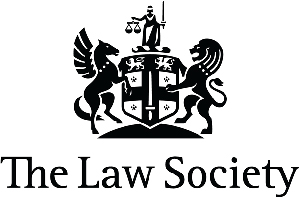Workplace bullying is a significant issue affecting many employees in the UK, leading to severe impacts on mental health, productivity, and overall well-being. Understanding your rights and the steps you can take to address bullying is crucial. In this article, our expert employment lawyers provide actionable steps to tackle workplace bullying effectively.
If you are experiencing workplace bullying, contact our expert lawyers for a Free Consultation at 0207 459 4037 or through our online booking form below for a confidential discussion.
What Constitutes Workplace Bullying?
Recognising Workplace Bullying
Workplace bullying involves repeated, unreasonable behaviour directed towards an employee or group of employees, creating a risk to health and safety. It can manifest in various forms, including verbal abuse, physical intimidation, and exclusion from work activities.
Common Examples of Workplace Bullying
- Verbal Abuse: Insults, shouting, offensive jokes.
- Exclusion: Deliberately excluding someone from meetings or social events.
- Undermining Work: Constant criticism, sabotage of someone’s work.
- Unreasonable Workloads: Imposing unrealistic deadlines or excessive workloads.
- Threats and Intimidation: Threatening job loss or other punishments.
Case Study: Jane, a financial analyst, was frequently shouted at by her manager during meetings. This behaviour affected her confidence and mental health. Jane documented these incidents and reported them to HR, leading to an investigation and disciplinary action against the manager.
Step 1: Recognise the Signs of Workplace Bullying
Understanding the different forms of bullying is the first step towards addressing the issue. Bullying can be subtle, such as exclusion from meetings, or overt, like verbal abuse. Recognising these signs early can help you take timely action.
Case Study: John, an IT specialist, was repeatedly given unrealistic deadlines by his manager, causing undue stress. He documented these instances and approached HR. With the evidence provided, HR intervened, and John’s workload was reassigned more reasonably.
Step 2: Document the Bullying Incidents
Why Documentation is Crucial
Documenting bullying incidents is essential for providing evidence when reporting the behaviour. It helps create a clear record of events and can support your case if legal action becomes necessary.
Effective Documentation Techniques
- Keep a Diary: Record dates, times, locations, and details of each incident.
- Collect Evidence: Save relevant emails, messages, or communications.
- Witness Statements: Note down names of colleagues who witnessed the incidents.
Example Documentation Entry:
Date: 12/05/2024
Time: 10:30 AM
Location: Meeting Room B
Incident: Manager yelled at me in front of the team, calling my work “utterly incompetent.”
Witnesses: John Doe, Mary Smith
Step 3: Report the Bullying
How to Report Bullying at Work
- Follow Company Policy: Use your company’s grievance procedure to report bullying to HR or a trusted supervisor.
- Seek Support: If internal procedures are ineffective, consider external bodies like ACAS (Advisory, Conciliation and Arbitration Service) or your trade union.
Under the UK Employment Rights Act 1996, employees have the right to a safe working environment free from harassment and bullying. Futher, the following legislation is also relevant in workplace bullying claims:
Employment Rights Act 1996, Section 94(1): “An employee has the right not to be unfairly dismissed by his employer.”
Protection from Harassment Act 1997: This Act makes it a criminal offence to harass someone and provides a civil remedy for victims. Section 1 states, “A person must not pursue a course of conduct which amounts to harassment of another and which he knows or ought to know amounts to harassment of the other.”
Health and Safety at Work etc. Act 1974, Section 2(1): “It shall be the duty of every employer to ensure, so far as is reasonably practicable, the health, safety, and welfare at work of all his employees.“
Case Law on Workplace Bullying and Their Implications
| Case Name | Summary | Key Takeaways | Amount Awarded |
| Majrowski v Guy’s and St Thomas’ NHS Trust [2006] | Established employer liability for employee harassment | Employers can be held vicariously liable for harassment by employees | £7,500 for injury to feelings |
| Martin v Devonshire Solicitors [2011] | Unfair dismissal due to bullying by a senior partner | Successful claims for constructive dismissal due to workplace bullying | £35,000 for unfair dismissal |
| Green v DB Group Services (UK) Ltd [2006] | Stress-related injury due to workplace bullying | Employers have a duty of care to prevent stress-related injuries at work | £850,000 for stress-related injury |
| Horkulak v Cantor Fitzgerald International [2004] | Breach of contract due to bullying and harassment | Compensation awarded for breach of contract caused by bullying and harassment | £1,000,000 for breach of contract |
| Moore v Xstrata Coal Queensland Pty Ltd [2005] | Psychological injury due to workplace bullying | Employers must take reasonable steps to prevent psychological injuries | £470,000 for psychological injury |
| Hammond v International Network Services (UK) Ltd [2007] | Constructive dismissal due to hostile work environment | Highlighted the significance of maintaining a non-hostile work environment | £23,000 for constructive dismissal |
Need legal advice? Contact our specialist workplace harassment lawyers at 0207 459 4037 or via our online booking form for a Free Consultation today.
Step 4: Seek Legal Advice
Legal Options Available
- Mediation: A neutral mediator can help resolve the conflict.
- Employment Tribunal: File a claim for unfair dismissal or constructive dismissal if you resign due to bullying.
- Civil Claims: Seek damages under the Protection from Harassment Act 1997.
Remedies and Outcomes
- Compensation for Injury to Feelings: This is awarded to compensate for the emotional impact of the bullying.
- Constructive Dismissal Claims: If the bullying forces you to resign, you can claim for constructive dismissal.
- Damages for Psychological Injury: Compensation for stress or psychological harm caused by bullying.
- Breach of Contract: If the bullying breaches your employment contract, you can seek damages.
- Reinstatement: In some cases, an employee may be reinstated to their position if it is deemed that their dismissal was unfair.
Example of Legal Remedies
In Green v DB Group Services (UK) Ltd [2006], the court held the employer liable for a stress-related injury caused by workplace bullying, awarding £850,000 in compensation. This emphasises the employer’s duty of care to prevent such harm.
Step 5: How to File an Employment Tribunal Claim
Steps to Take When Filing a Claim
- Early Conciliation: Before making a claim to the Employment Tribunal, you must notify ACAS and engage in Early Conciliation. This step is intended to resolve the dispute without going to tribunal.
- Submit Claim Form (ET1): If conciliation fails, submit a claim form (ET1) to the Employment Tribunal. This form includes details of the claim and the grounds for making it.
- Employer’s Response (ET3): The employer will be sent a copy of your claim and will have to respond using a form known as ET3.
- Case Management Orders: The tribunal will issue orders to prepare the case, including deadlines for exchanging documents and witness statements.
- Preliminary Hearing: A preliminary hearing may be held to determine specific legal points or to manage the case efficiently.
- Full Hearing: Both parties present their evidence and arguments before the tribunal. Witnesses may be called to give evidence.
- Decision: The tribunal will make a decision based on the evidence presented. If successful, you may be awarded compensation or other remedies.
Potential Outcomes
- Compensation: Financial compensation for loss of earnings, injury to feelings, and other damages.
- Reinstatement: Returning to your job if the dismissal was found to be unfair.
- Recommendations: The tribunal may make recommendations to the employer to prevent future bullying.
Case Study: Employment Tribunal Success
In Martin v Devonshire Solicitors [2011], the tribunal awarded £35,000 for unfair dismissal due to bullying. This case highlights the importance of documenting incidents and pursuing legal remedies when internal processes fail.
Understanding Limitation Periods for Employment Tribunal Claims
| Type of Claim | Limitation Period | Relevant Legislation |
| Unfair Dismissal | Three months less one day from the date of dismissal | Employment Rights Act 1996, Section 111(2) |
| Constructive Dismissal | Three months less one day from the last day of employment | Employment Rights Act 1996, Section 111(2) |
| Discrimination Claims | Three months less one day from the date of the act | Equality Act 2010, Section 123(1) |
| Harassment Claims | Three months less one day from the date of the last incident | Protection from Harassment Act 1997, Section 1 |
Implementing Effective Workplace Bullying Policies
Developing Effective Policies
- Clear Definition: Define what constitutes bullying in your workplace.
- Reporting Procedures: Establish clear steps for reporting bullying.
- Training: Provide regular training to employees and managers on recognising and preventing bullying.
- Support Systems: Ensure access to counselling and support services for affected employees.
Example Policy Clause: “Our company has a zero-tolerance policy towards bullying. Any employee found to be engaging in bullying behaviour will face disciplinary action, up to and including termination.”
FAQs on Workplace Bullying in UK
What should I do if I am being bullied by my manager?
You should document the incidents, report them internally following your company’s grievance procedure, and seek legal advice if necessary.
Can I sue my employer for workplace bullying?
Yes, you can take legal action under the Protection from Harassment Act 1997 or file a claim in the Employment Tribunal for constructive dismissal or discrimination.
How does workplace bullying affect my rights?
Workplace bullying can lead to claims of constructive dismissal, discrimination, and breaches of health and safety regulations, entitling you to compensation.
Are there time limits for reporting workplace bullying?
Yes, claims in the Employment Tribunal usually must be made within three months less one day of the last incident of bullying or harassment.
What support is available for employees experiencing bullying?
Employees can access support through HR, trade unions, counselling services, and external bodies like ACAS.
Taking Action to Protect Your Rights
Addressing workplace bullying is crucial for maintaining a safe and productive work environment. By recognising the signs, documenting incidents, reporting them appropriately, seeking legal advice, and implementing effective policies, you can take control and protect your rights.
For expert legal assistance with workplace bullying, contact our expert lawyers at 0207 459 4037 or through our online booking form for a Free Consultation today.

































